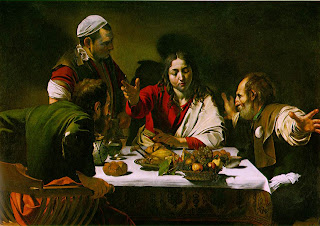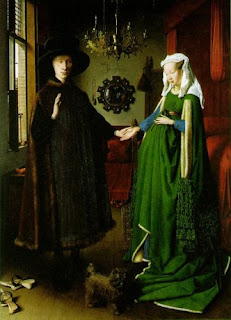Tuesday, October 28th, 2008
Albers Squared
 Last night after I turned out the light, J and I lay in bed and talked about art while we stared at the the ceiling. J recently came up with the fabulous idea to publish a book on the Homage to the Square series, and he asked me if I wanted to help. J’s going to do the design and I’m going to edit/write (although I’m sure J will have a lot of input for the essays too). At first, we thought that we would make a compilation of essays that have already been written on the series, but a preliminary search showed that there isn’t much written specifically on Homage to the Square. It looks like more people are interested in Albers’s life and work in the Bauhaus school. J and I wonder if this means that a) there aren’t enough interesting things to say about these squared exercises in color juxtapositions or b) the task of compiling and discussing these works is extremely daunting, given that Albers purportedly made a “seemingly endless number” of these squares over twenty-five years.1 We hope that people would have an interest in learning more about this series, and we’re willing to take the risk that the work might be daunting. It’s probably impossible to gather all of the series in one publication, but I would hope we could find a good collection.
Last night after I turned out the light, J and I lay in bed and talked about art while we stared at the the ceiling. J recently came up with the fabulous idea to publish a book on the Homage to the Square series, and he asked me if I wanted to help. J’s going to do the design and I’m going to edit/write (although I’m sure J will have a lot of input for the essays too). At first, we thought that we would make a compilation of essays that have already been written on the series, but a preliminary search showed that there isn’t much written specifically on Homage to the Square. It looks like more people are interested in Albers’s life and work in the Bauhaus school. J and I wonder if this means that a) there aren’t enough interesting things to say about these squared exercises in color juxtapositions or b) the task of compiling and discussing these works is extremely daunting, given that Albers purportedly made a “seemingly endless number” of these squares over twenty-five years.1 We hope that people would have an interest in learning more about this series, and we’re willing to take the risk that the work might be daunting. It’s probably impossible to gather all of the series in one publication, but I would hope we could find a good collection.
So, last night we stared at the ceiling and brainstormed some ideas of fun things to discuss in the book – perhaps the symbolism of the square or what the significance the square shape might have in regards to the Modernist movement. I’m also interested in examining how Albers’s observations in harmonious color arrangements tie into different color theories.
If there aren’t enough already-written essays to compile for a publication, we also brainstormed different people who we would “allow” to contribute to our book (Ha! As if we are at a point where we could pick and choose scholars, and do them a favor by accepting their submission). That being said, we’re definitely willing to look at any submissions or ideas that people have regarding the Homage to the Square series. Any thoughts?
Now we just need to find funding and a publisher for our great idea. Hmm.
1 H. H. Arnason, History of Modern Art, 1st ed., (Upper Saddle River, NJ: Prentice Hall, Inc., 2004), 349.






